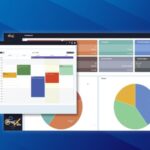Minneapolis-based AVI Systems celebrated its 40th anniversary last year, but in a sense it was founded again in 2009. That was the year the company completed the two-decade transfer to being wholly owned by employee stock option plans (ESOPs).
With more than 450 employees, that’s a lot of bosses. Indeed, that’s what they are and that’s a good thing, says Jeff Stoebner, president and CEO. His family started the business in 1974 and in the 1980s decided to transition to ESOP. An ESOP structure fosters a culture that Stoebner says is difficult to achieve in non-employee-owned companies.
“Inside an employee-owned company the idea is that employees have a stake in the outcome and that resonates better,” he says. However, it’s rare for an integration firm to fully embrace an ESOP structure, so we sought to analyze the effect it has on AVI Systems’ processes and employees.
Why Don’t More Firms Embrace ESOP?
Companies that offer employees an ESOP are common enough, just not in this industry.
“It’s used in a lot of different industries, but not so much in the AV contracting industry,” Stoebner points out. “They’re typically used to provide for succession planning from primary owners to what becomes the next generation of owners.”
Since succession planning is an area that a lot of integration firm owners struggle with, ESOP would appear to be a logical option for many firms. There’s a reason why that’s not necessarily the case, says NSCA executive director Chuck Wilson.
He says a “very small percentage” of NSCA member integration firms employ ESOP. “The reason is most of our members don’t generate enough profits to service the debt load on a leveraged ESOP.”
Related: AVI Systems’ Steve Riley Stays Close to his Roots
As an approximately $200 million integration firm in 2014, AVI Systems is in a unique revenue category. Only four firms recognized as 2014 CI Industry Leaders report over $100 million in annual revenue.
Without aggressive revenue it’s difficult to deal with the debt that comes from ESOP buying out the retiring owners, Wilson says. “If that debt can’t be serviced the ESOP employees are obligated to borrow against the shares or find outside funding. I’ve seen these unravel simply due to being highly leveraged on the buyout and go into a default condition.”
That’s the straight talk when it comes to ESOP challenges. It’s another story, however, when there is enough revenue, because ESOP can be extremely beneficial, Wilson adds. “They are great for all parties when the company is stable and profitable.”
Who Reports to Whom?
It’s tempting to get very ideological when it comes to an ESOP company. The reality is that while there are certainly warm and fuzzy benefits of the program, it’s not so different than how most companies are run.
“One thing to clarify,” Stoebner says, “is that employee-run companies are typically run like other organizations. They have a board. They have executives. They have employees that supervise. They have employees that don’t supervise.”
That’s the case at AVI Systems, says marketing and communications manager Kelly Perkins. “We have a board of directors. If they don’t believe that Jeff is working the way he should be with all the employees, they can vote him off.”
That system of checks and balances is critical, Stoebner says. “Sometimes people think that [an ESOP] company is more like a democracy and that’s not the case. The company is still governed in the same way. What’s different is that employees are shareholders, all of them, and there is a sharper awareness of how the company is run.”












